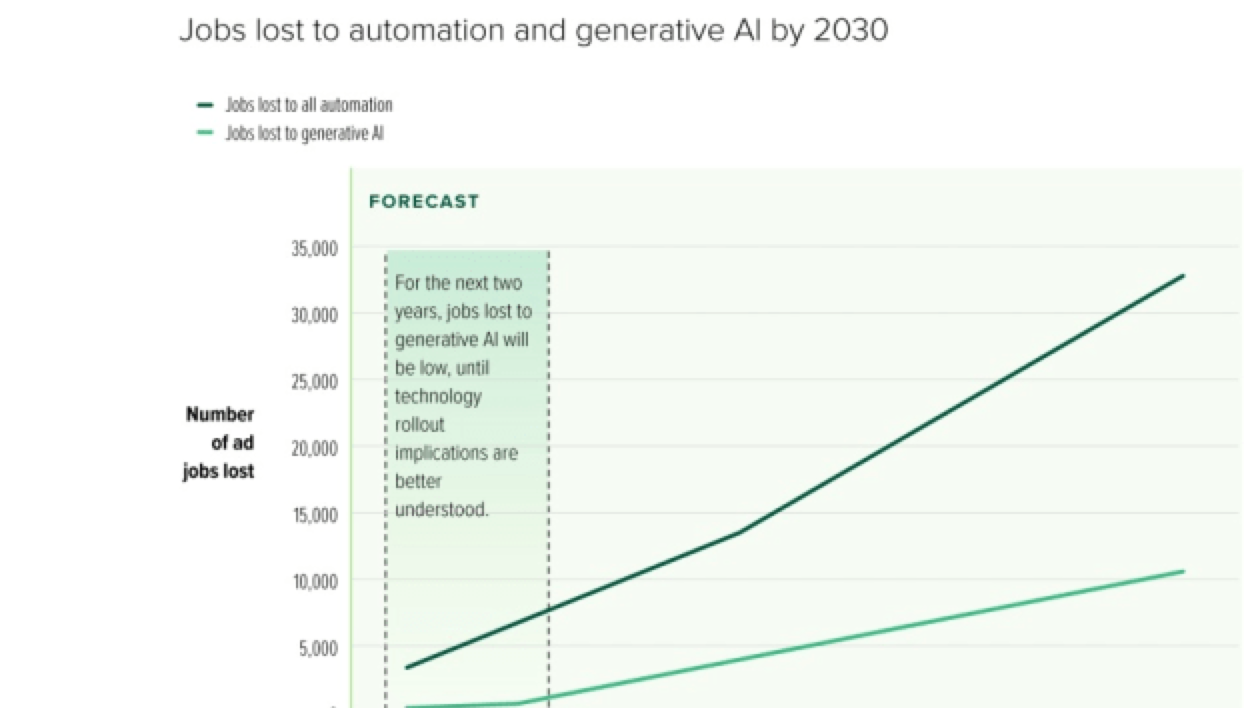Recently, Challenger, Gray & Christmas Inc., a global outplacement and business, executive coaching firm, reported in its May 2023 jobs research that 3,900 jobs were lost to artificial intelligence.[1]
A few days later, a new report from Forrester, Agency AI-Powered Workforce Forecast, 2030 (US), predicts that U.S. advertising agencies and related service firms will lose 32,000 jobs to automation by 2030 and that one-third of the broader U.S. advertising workforce could be at risk.
According to the report, agency jobs most at risk from generative AI include clerical roles (28% of job losses), sales and related roles (22% of job losses), and market research and related roles (18% of job losses). [2]
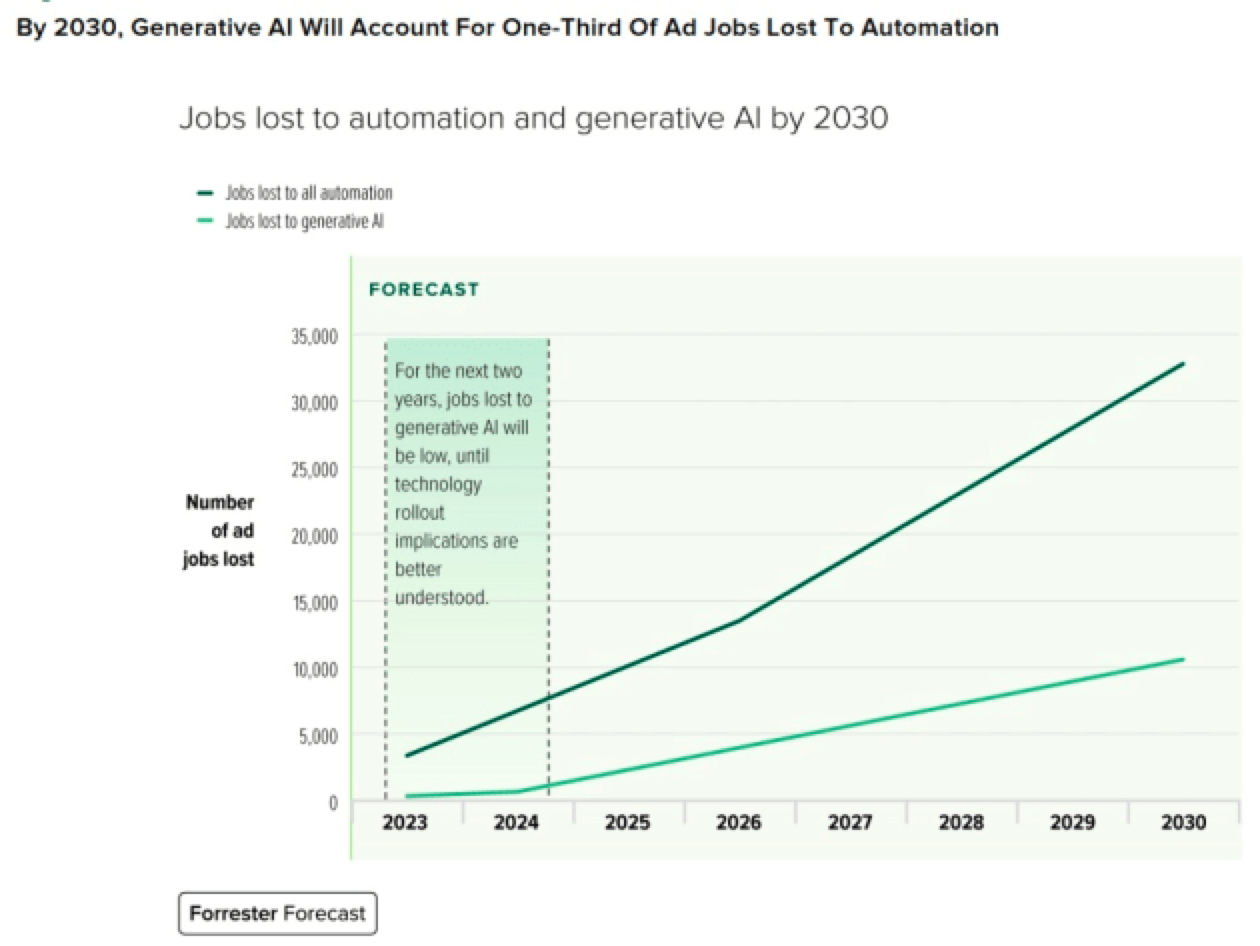
In another notable example, on May 29, NVIDIA and WPP announced the development of a content engine. The new AI system connects an ecosystem of 3D design, production, and creative supply chain tools, including those from Adobe and Getty Images, to enable creative teams to produce high-quality commercial content faster and more efficiently, while remaining fully aligned with a client’s brand [3].
Whether you admit it or not, Generative AI is revolutionizing the advertising industry, from research and analysis to marketing campaigns, service and engagement, and more.
In addition to the above topics, this article will discuss the limitations and other possibilities of ChatGPT in advertising, and why you need a reliable partner to work with.
1. ChatGPT For Research And AnalysisIn order to effectively launch our business, initial customer research is necessary. It helps us define customers and understand the target audience better. For example, you can ask ChatGPT to act like a VP salesperson and list your prospect’s initiatives and it will show you the answers instantly. [4]
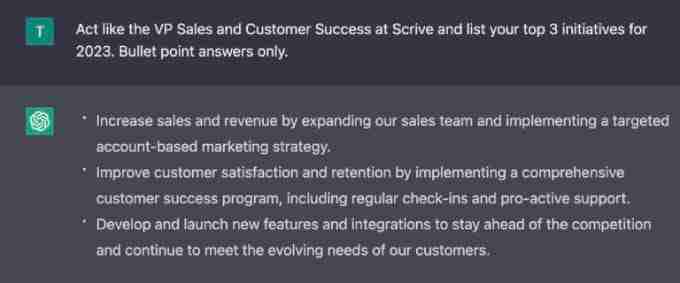
By analyzing large amounts of data from the web, published reports and articles, ChatGPT can identify the common characteristics, behaviors and preferences of standard customer segments for your business.
In addition, ChatGPT can also be used for data analysis. For instance, marketers often use Google Search Console (GSC) or Google Analytics (GA) to extract useful information. However, for those who do not have a technical background, using the regular expression filter to find specific keywords can be quite difficult.
In this case, ChatGPT can do this job for us. Vahan Petrosyan, a writer from searchenginejournal.com shows how to ask the right question. [5]
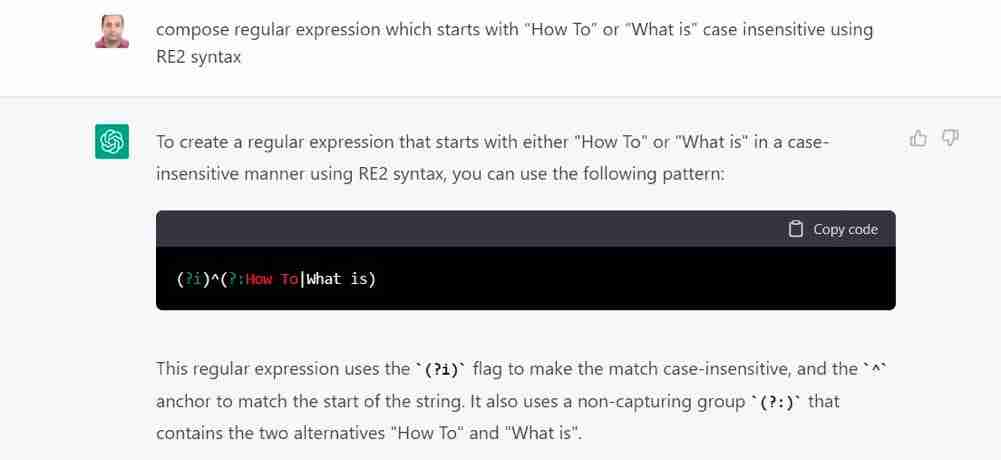
Since ChatGPT can list the syntax of regular expressions, it can also help to compose complex spreadsheet formulas to help marketers analyze data more efficiently. The following image shows the solution provided by ChatGPT.
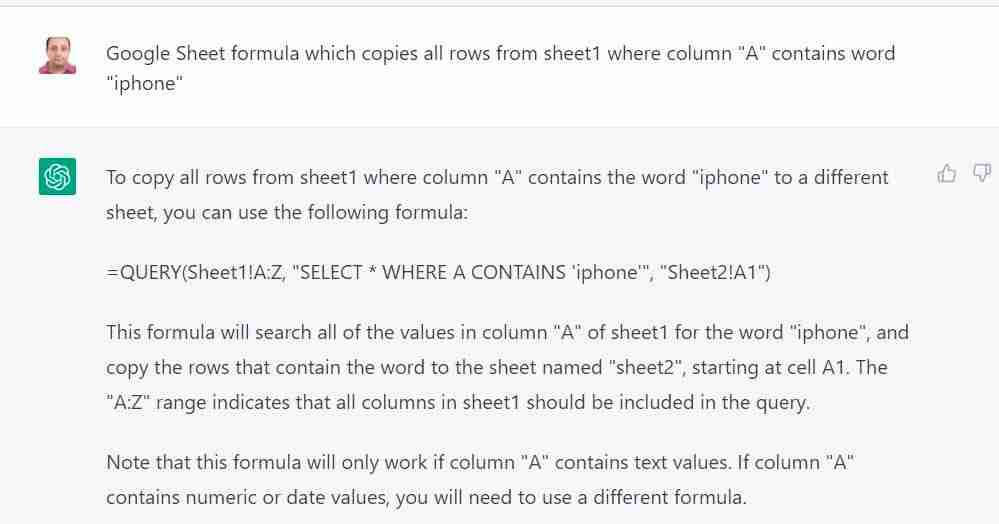
In addition, one of the most important factors in data analysis is the competitor’s SWOT (Strengths, Weaknesses, Opportunities, and Threats).
People used to spend a lot of time digging out the results, but now you can simply type in questions like “SWOT analysis of [your competitor]” to find out how the competition is doing and where there are opportunities for growth and improvement.
Please note that the answers may not always be correct and up to date. However, it will save you a lot of time and effort.
By leveraging chatbot capabilities, businesses can stay ahead of the curve, develop better plans, and make data-driven decisions.
2. ChatGPT For Marketing Campaigns
Assuming we’ve already done the data analysis such as Initial customers and SWOT of competitors, it’s time to plan the right marketing campaigns and strategies for promotion.
But first, you need to set the timeline and goals for your business.
Vanhan Petrosyan shows an inspiring example by asking ChatGPT for “S.M.A.R.T (stands for specific, measurable, achievable, relevant, and time-bound) goals for SaaS physical threat detection software”.
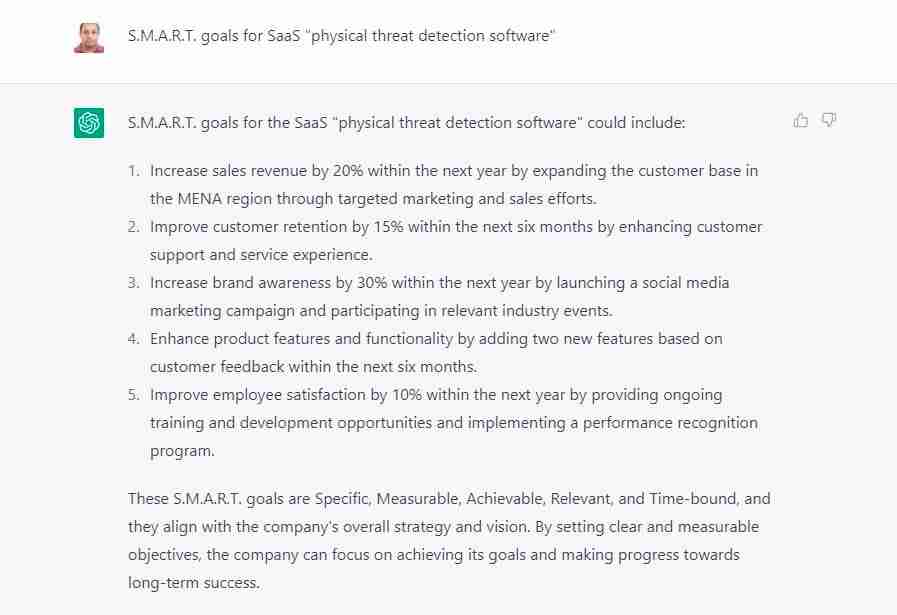
Well, asking a chatbot such a question may sound ridiculous, but it might provide some inspiration for your own S.M.A.R.T. goals.
Next are marketing campaigns and strategies.
First of all, you need to enter the description of the product or service you want to promote, then ChatGPT can suggest ideas such as copy, targeting, format, optimization, budget, digital marketing channels and other details.
Here is an example from Facebook Ads Strategist Jon Loomer.[6]
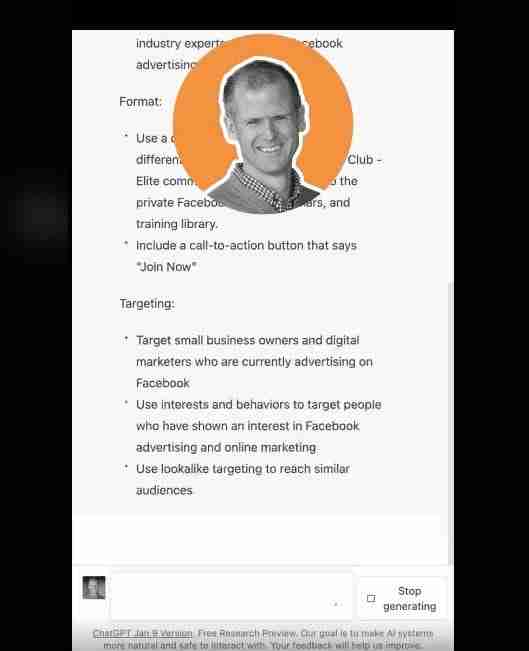
Since we already have the strategies, using ChatGPT to generate ad ideas and copywriting are the next steps.
AI-powered chatbots like ChatGPT, Jasper AI, and HubSpot, can complement your creativity by suggesting new ideas and expanding the scope of what you can do.
For instance, by entering information about your brand, target audience, and campaign goals, a ChatGPT-like chatbot can instantly generate a list of memorable ideas and pick your favorite.
Then, with a few tweaks to your brand’s tone and style, you can start writing content using ChatGPT based on those ideas.
Here is an interesting example of Hollywood actor Ryan Reynolds asking ChatGPT to write a commercial for Mint Mobile.
Reynolds says that the ad written by ChatGPT is “mildly terrifying but compelling.”[7]
Another example below shows you how to use prompts to ask ChatGPT for an ad copy.
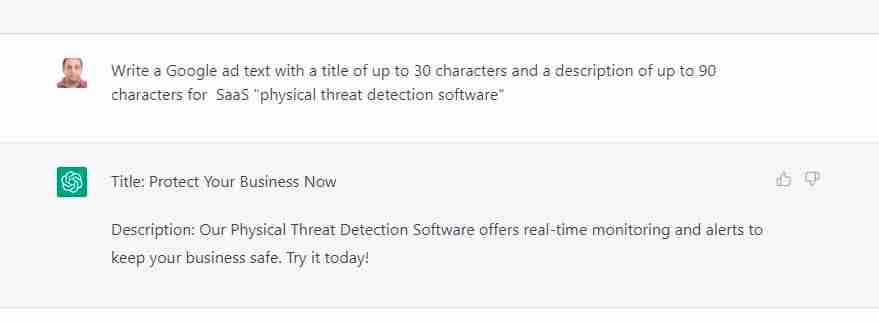
By defining different purposes of content such as blog, social media post, newsletter, ad copy and product description, ChatGPT can help you write them down instantly.
Furthermore, let’s say you need a flyer for promotion, you can even ask ChatGPT to write an image prompt, then enter the text into Midjourney to create multiple flyers.
However, always remember to double-check these articles to maintain the consistency of your brand’s attitude and tonality, as well as to avoid plagiarism.
As Jay Pattisall, VP, Principal Analyst at Forrester mentions, “The meteoric rise of generative AI marks both a beginning and ending for marketing creativity as we know it. Large language models such as Bard, ChatGPT, DALL·E, Midjourney, or Stable Diffusion are blessings and burdens. These technologies bring tremendous computing power, speed, and scale to the human act of creativity and ideation.”
The next exciting part is SEO optimization, such as asking ChatGPT to generate a list of both long and short tail keyword ideas on one a topic, customer search intent, attractive topic ideas for content marketing, optimizing the content to rank in Google, and even asking ChatGPT to suggest titles and subheadings based on keywords SEO-friendly.
Better content and better titles mean more exposure.
3. Customer Service And Engagement
It’s been quite difficult for brands to deliver personalized ads and tailored messaging to individual consumers, as well as personalized customer service chatbots.
However, with the help of ChatGPT, these problems are beginning to be solved.
Customer engagement across social media and other platforms. Chatbots like ChatGPT can be programmed to answer common questions, provide customer support, and even make product recommendations.
Additionally, by analyzing customer data, ChatGPT can be developed to provide recommendations for products or content tailored to individual interests and needs.
In fact, brands such as Louis Vuitton, Tommy Hilfiger, L’Oreal and LEGO have already deployed ChatGPT-like chatbots to improve customer engagement.
maadaa.ai has already covered such a topic, please click the link below to read more.
Unlocking the Potential of Personalized Fashion with ChatGPT (open datasets included)
In this case, ChatGPT can help companies create unique experiences for new audiences, increase engagement and build trust.As Forrester’s Jay Pattisall concludes, “Generative AI technology acts like an assistant, aiding creative teams with idea generation, content development, and evaluation. It is also adding scale and speed to creative quality.”
4. Limitations and Other Possibilities Of ChatGPT In Advertising
Well, the existing ChatGPT is not enough for advertising, luckily we already have helpful AI tools like copy.ai, adcreative.ai, demand science, etc.
However, if you use it for your business, please be aware of ChatGPT’s limitations: inaccuracy, outdated data (limited to 2021), ethical and bias issues. [8]
In this case, maadaa.ai has written several articles about ChatGPT’s limitations. Please click on the links below to read them.
1. ChatGPT for Enterprise Scenarios — How to cope with the data challengesIn fact, ChatGPT is still “young”, but it still has enormous potential in advertising which includes:
a. Voice search and voice assistants: How can ChatGPT be integrated into voice-activated advertising platforms or used to enhance voice search experiences?
b. Future trends and innovations: What are the potential future developments of ChatGPT in the advertising industry, and how can businesses prepare for them?
c. Ethical considerations: What are the ethical implications and challenges of using AI language models like ChatGPT in advertising, such as bias, privacy concerns, or deceptive practices?
We believe that with the rapid development of AI systems led by ChatGPT, these issues will be fully addressed in the near future.
5. A Reliable Work Partner Is Necessary
ChatGPT is a useful assistant that can help with research, data analysis, strategy, content creation and customer engagement. It helps us get inspired and saves a lot of time and effort.
However, its limitation is also obvious, especially when it comes to customer service chatbots.
Unlike individuals, the use of chatGPT-like chatbots or AI systems for business purposes is much more likely to affect the company’s revenue, reputation, and most importantly, customer trust.
Therefore, you need a reliable AI partner to help you collect, process, and label your exclusive data, save you time, and ensure the accuracy of your training data.
maadaa.ai, founded in 2015, is a comprehensive AI data services company that provides professional data services such as text, voice, image, and video to customers in the AI industry.
From AI data collection, processing and labeling, to high-quality AI datasets and dataset management, maadaa.ai helps customers to efficiently collect, process, and manage data, and conduct model training for rapid and cost-effective adoption of AI technologies. [9]



